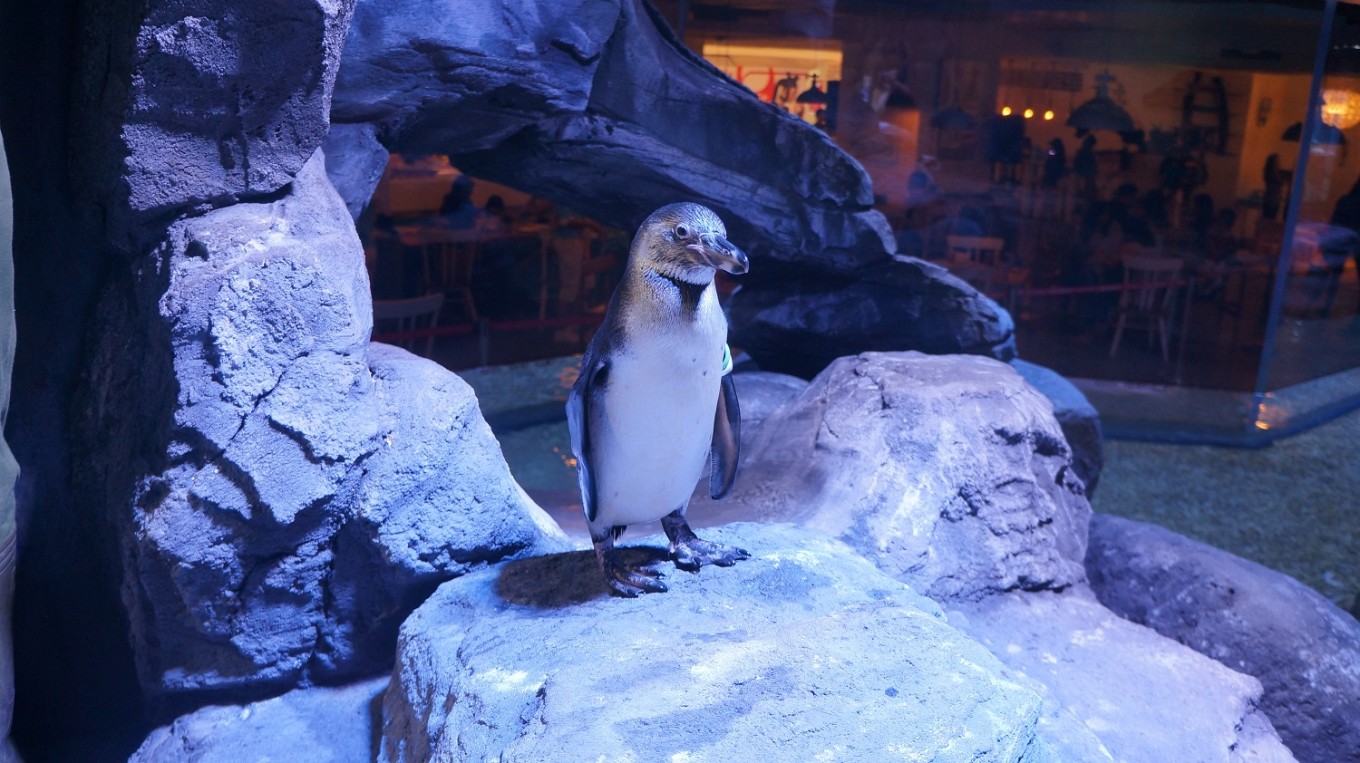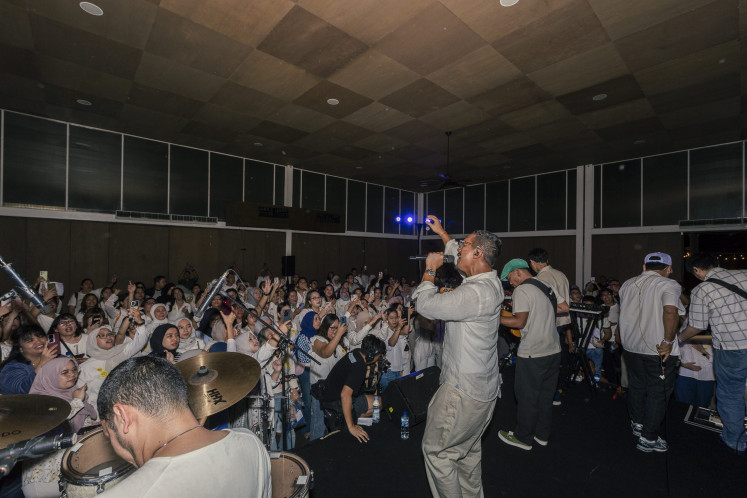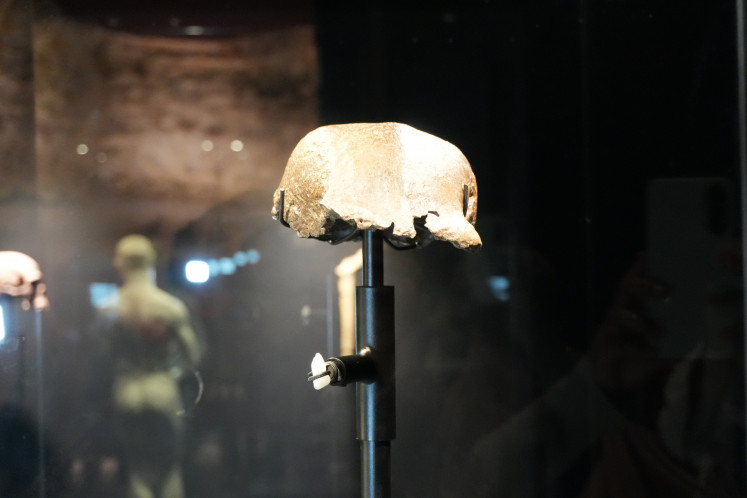Popular Reads
Top Results
Can't find what you're looking for?
View all search resultsPopular Reads
Top Results
Can't find what you're looking for?
View all search resultsPenguin restaurant puts spotlight on zoo controversy
Pingoo is one of many cases that spark the question of whether or not a zoo is a sanctuary or simply a facility in a multimillion-dollar showbiz. This is the 21st century, where access has been greatly increased to unforgettable tours that allow visitors to see animals in their natural habitat. A zoo is simply an illusion and a cheaper copy of the wild.
Change text size
Gift Premium Articles
to Anyone
T
he Neo Soho Mall in West Jakarta created a lot of hype due to its promise of many new features. One of them, which has led to lines of people waiting outside, is the Pingoo restaurant, where visitors can dine while watching penguins inside a glass exhibit.
The penguins at Pingoo are sub-tropical species, Hamboldt penguins, which originated from Chile and Peru and were bred in the Cisarua Safari Park in Bogor and Taman Safari Indonesia. The penguins live in an enclosure that attempts to recreate their natural habitat – a blend of rocks to rest in and some water to swim in – as well as a comfortable temperature and a staple diet.
This new restaurant gimmick raises many serious questions about the wellbeing of its inhabitants. Keep in mind, these Hamboldt penguins, which have been placed inside a moderate sized aquatic enclosure, are known to travel many miles out to the sea in search of food. These penguins don’t belong inside a glass tank to be gawked at.
Read also: Restaurant presents live penguins as part of conservation program
Pingoo is one of many cases that spark the question of whether or not a zoo is a sanctuary or simply a facility in a multimillion-dollar showbiz. This is the 21st century, where access has been greatly increased to unforgettable tours that allow visitors to see animals in their natural habitat. A zoo is simply an illusion and a cheaper copy of the wild.
Experts have detailed many examples of animals spiraling into stress and depression after being placed inside a zoo, one of them being Pizza the Polar Bear that lived in a Chinese mall for some time. Pizza’s visible signs of extreme stress caused public outrage and was finally dubbed the world’s saddest polar bear. Her case is more or less similar to these penguins. Cramped inside a glass enclosure that houses a crappy duplicate of the wild inside a mall, a health decline like Pizza’s is inevitable.
The point of a zoo in the first place is to encourage conservation and become a sanctuary for animals. However, with an increasing population and a higher demand to see animals as a leisure activity, zoos are trying to fit in as many interesting animals as they can in an increasingly smaller space. Soon their focus is no longer on the conservation of the animals, but on the profit they can make by doing so.
Read also: Zoos to be standardized to combat animal abuse
Take Sea World for example; the size of its orca enclosure is just 1 percent of the size of its parking space according to Google Maps. After petitions receiving thousands of signatures have been circulated, and the deaths of both orcas and trainers, people are beginning to understand the truth behind Sea World. The public, using their right to protest, has finally called Sea World to account for its actions. Sea World tried to rectify the situation, but many people still say that what it has done is not enough.
In the 21st century, we have communication technologies like the internet, television shows and newspapers where awareness can be raised. If more people are aware that they could take part in the conservation of animals, there would no longer be a need for zoos. This is a time where exercising your freedom of speech and speaking out is encouraged, and ideas that can educate people should be raised.
People hope that the year 2017 will not be as bad as 2016. A Sumatran rhino that was captured died a few days later due to a leg infection. Tillikum, the orca, has finally succumbed to his health problems in captivity in Sea World. But the path of the world will definitely stay in steady decline if people don’t act now. There are new problems arising—like Pingoo the penguin restaurant in Central Park, and even existing problems that haven’t yet been dealt with.
There’s Kina, a false killer whale who has spent more than seventeen months swimming around in a tank that’s barely large enough and clean enough for an animal to live in. There’s Lolita, an orca with failing eye-sight, who lives in a 35-foot-long tank in the Miami Sea Aquarium. There are the dolphins herded into the Taji cove where they are slaughtered and ripped apart to be sold to aquariums due to people insisting on maintaining the ‘tradition’.
The word ‘tradition’ itself has become a kind of blindfold for many people out there. Awareness can only come if people want to know. Sometimes, when people use the same ideas over and over again it becomes part of the flow, and sometimes, changing the flow of the river is one of the hardest things to do. Change is fundamental now. Opinions have many different public impacts. It’s no longer just the case of black and white now.
Zoos could be turned into something completely new and different. While they serve as the last stronghold for animals, zoos should melt down their walls, and show people the true potential of the animals that once belonged in cages. Unlike a nature documentary that may just bore people, they can show the community awe-inspiring nature. Not through shows, but through tours inside nature itself. The current wildlife tours could merge together with zoos, and evolve into something new.
Jane Godall once said that “Only if we understand, will we care. Only if we care, will we help. Only if we help, shall all be saved.” This is the time we must question ourselves about our relationship with nature and how we choose to live in it.
***
Elysa Ng is a 14-year-old middle year student. She is a passionate supporter of nature conservation and protection. She loves wild animals, reading, writing and white chocolate. She has been writing since she was 10.
---------------
Interested to write for thejakartapost.com? We are looking for information and opinions from experts in a variety of fields or others with appropriate writing skills. The content must be original on the following topics: lifestyle ( beauty, fashion, food ), entertainment, science & technology, health, parenting, social media, travel, and sports. Send your piece to community@jakpost.com. For more information click here.











